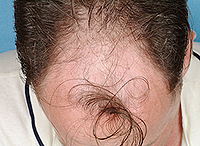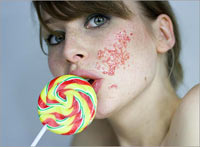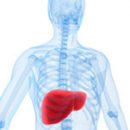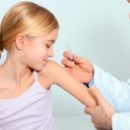In winter, people who are predisposed to skin diseases are especially hard. After all, in the cold season, fungal infections and dermatitis are exacerbated and it is in winter it is easy to become the owner of the impetigo. In this article you will learn about the reason, symptoms and principles of treatment of this ailment.
Content
Winter Beware of Impetigo
 Winter - Hard time for people suffering from skin diseases. Bowl of all different dermatoses, eczema and fungal infections are exacerbated in winter. It is primarily caused by the fact that with the onset of cold weather, the season of various colds begins, which weakens our immunity, as well as a decrease in the protective functions of the body caused by the disadvantage of vitamins.
Winter - Hard time for people suffering from skin diseases. Bowl of all different dermatoses, eczema and fungal infections are exacerbated in winter. It is primarily caused by the fact that with the onset of cold weather, the season of various colds begins, which weakens our immunity, as well as a decrease in the protective functions of the body caused by the disadvantage of vitamins.
Yeshe one ally skin diseases - insufficient air humidity. Central heating batteries, heaters - all this dryly dry the air indoors. In addition, in winter we rarely wear clothes from cotton fabrics, preferring something warmer, for example wool and synthetics. And these materials can enhance itching under skin diseases. Because of all these adverse factors in winter, our skin becomes especially vulnerable. Among the skin problems that wait for us in winter there is such a pre-exciting disease as an impetigo. How to deal with him, tells a dermatologist, Candidate of Medical Sciences Lidia Okuaovich.
The reason, symptoms and principles of treatment of impetigo
Impetigo is a skin disease that occurs on the site of cuts, small abrasions, cracks in the corners of the mouth and other microtrams of the skin. The culprits are impetigo - penetrating staphylococcal and streptococcal bacteria. If the disease is caused by staphylococcus, small bubbles appear on the skin, which are easily bursting and form crusts of golden color.
If the cause of the disease is streptococcal bacteria, you will not see bubbles, but you will see crusts. The contaminated place is strongly drawn, in some cases, shrama remains after impetigo. Small amazed areas of leather are treated with external means containing an antibiotic.
If the lesion is covered by an extensive area, antibiotics are accepted inside. The inflamed skin area must be kept open - bandages and dressings contribute to the reproduction of bacteria. The affected place can not be overheated, cold compresses are used to relieve itch. And remember: impetigo - infectious disease, so try to avoid contact with sick people.









